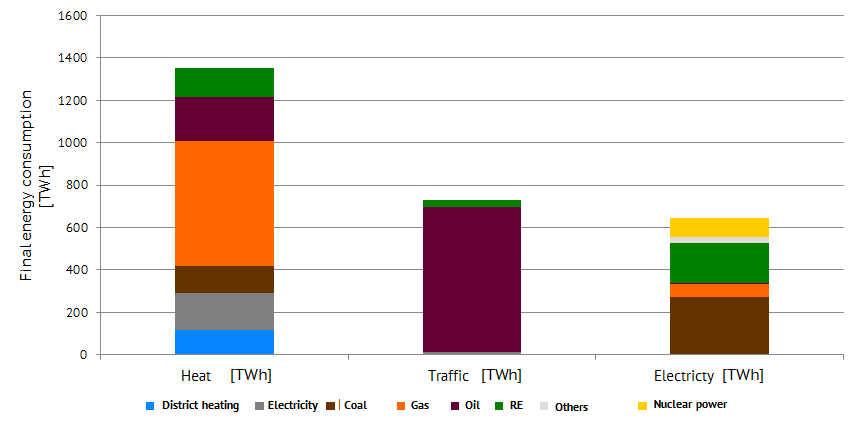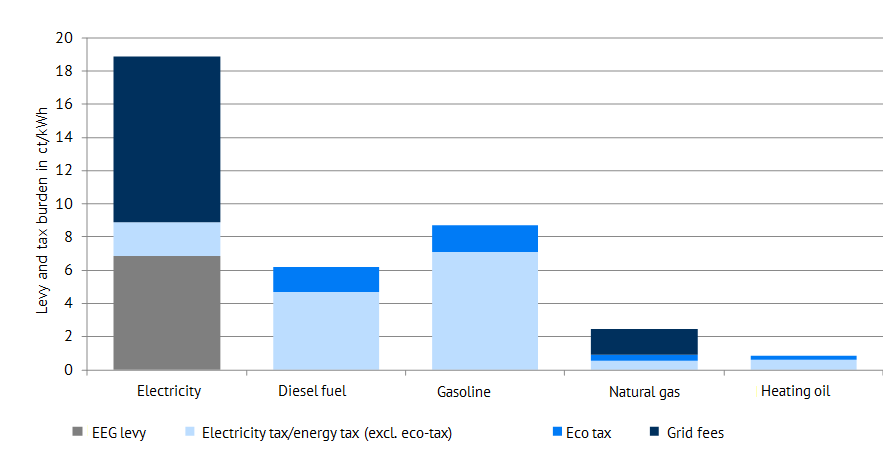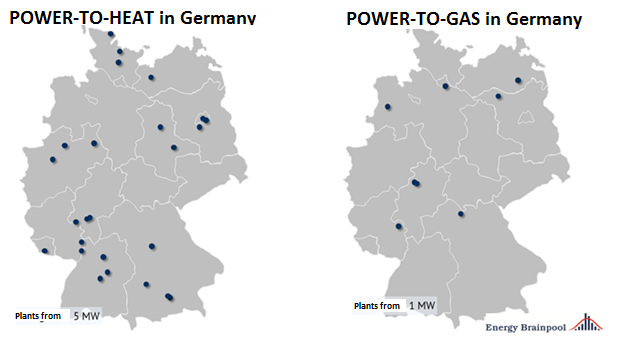Sector coupling is on everyone’s lips. The electricity, heating and transport sectors should be jointly optimized and evaluated in the future. However what does it precisely mean? In the following the essential context is explained.

What is sector coupling?
Linking the electricity, heating and transport sector through infrastructure and storable energy carriers is understood as sector coupling. It reflects a profound change in the energy system. The primary motivation is to decarbonise the other sectors with renewable energy sources in order to accomplish climate protection goals.
Renewably electricity can be either used directly or after conversion into other energy carriers or energy forms. The following two examples illustrate this: Electrically powered heat pumps that connect the electricity and heat sectors or electric vehicles that provide a link between the electricity and transport sectors.
A mere electrification of the heating and transport sector is not what defines sector coupling. The meaningful use of different energy sources for the respective needs in the sectors is the important factor. Figure 1 schematically defines components and important aspects for sector coupling. Consumers in industry, trade, commerce and services (GHD), households and transport use energy sources with the greatest possible efficiency provided by different infrastructures.
This can entail the conversion of fossil fuels in efficient combined heat and power (CHP) to electricity and heat, but also entails the production of synthetic natural gas by electrolysis. The reduction of CO2 emissions requires a high level of energy conversion efficiency and the increased use of renewable energy carriers and sources.
Which energy carriers are used in which sectors?
For an assessment of the electricity, heating and transport sector figure 2 exhibits the final energy consumption and its provision by the respective energy carriers in 2015 for Germany. With more than 1300 TWh, the final energy demand in the heating sector remains as large as the one in the electricity and transport sectors combined.

Figure 2: Final energy consumption in the electricity, heating and transport sector by energy carrier for Germany in 2015 (Data source: BMWi, source: Energy Brainpool)
At the same time, gas has the greatest share in the heating sector. In the transport sector, almost 95 percent of the final energy demand is currently covered by oil. The electricity sector is very heterogeneous, with just over a third provided by renewable energies.
If renewable energies are to be used to decarbonise energy use, this can be done through their direct use in the respective sectors (solar thermal in the heating sector, biofuels in the transport sector, wind and PV in the electricity sector). In some cases, the route via direct or indirect electrification is still the more efficient way.
Which technologies are available for this?
In addition, to direct electrification in the heating or transport sector via e.g. heat pumps or battery-powered electric vehicles, electricity can be utilized indirectly through conversion. This is done using conversion technologies, such as power-to-heat (PtH) or power-to-gas (PtG) plants. Figure 3 illustrates the locations of PtH and PtG plants which are installed in Germany.
Therefore electric boilers as well as heat pumps are examples of different PtH plant types. Electricity is used here to provide heat. A conversion of electricity into hydrogen and oxygen takes place by means of electrolysis in PtG plants. The hydrogen can be used as a synthetic gas either directly or after methanation. The resulting hydrogen or synthetic gas is now also usable in the transport or heating sector. Furthermore the chemical industry also uses hydrogen as a raw material for processes.
However, PtH and PtG plants are also able to provide flexibility for the power sector. With a surplus generation from wind and solar power plants, the electricity can find essential use in those conversion technologies, without having to curtail and thus discard renewable electricity.
Where are challenges and potential opportunities?
Currently, the major challenges lie in the cost-effectiveness of PtH/PtG plants compared with current fossil fuels used in the transport and heating sector. At present, the use of electricity is much more expensive when compared to the use of fossil fuels. This is mainly due to the fact that fossil fuels are less affected by environmental legislation than electricity. Furthermore, the levy and tax burden of energy carriers is at the expense of electricity, which consequently becomes more expensive for consumption in a PtH/PtG plant.
Illustration 4 points out the discrepancy caused by state taxes, levies and charges on the costs of different energy sources. An in-depth analysis of these imbalances can be found in a study by Agora Energiewende.

Figure 4: Levy and tax burden of different energy carriers in Germany (Dec 2017). Source: Energy Brainpool
Sector coupling is only ecologically sensible if less CO2-intensive electricity is used in the other sectors. If renewable electricity should be used in sector coupling technologies for the transport and heating sectors, a higher electricity demand must be assumed. Conversely, more sector coupling means further electricity demand, and also requires greater expansion of CO2-free power generation.
This implies that greater efficiency gains and energy-saving measures can and must reduce power consumption in the other sectors. This would result in lower costs for the expansion of electricity generation capacities.
Learn more about the opportunities and challenges of sector coupling in our seminar in May 2018 (in German, but also provided as In-house seminars in English). The technical and economic conditions as well as current regulatory changes will be discussed.





